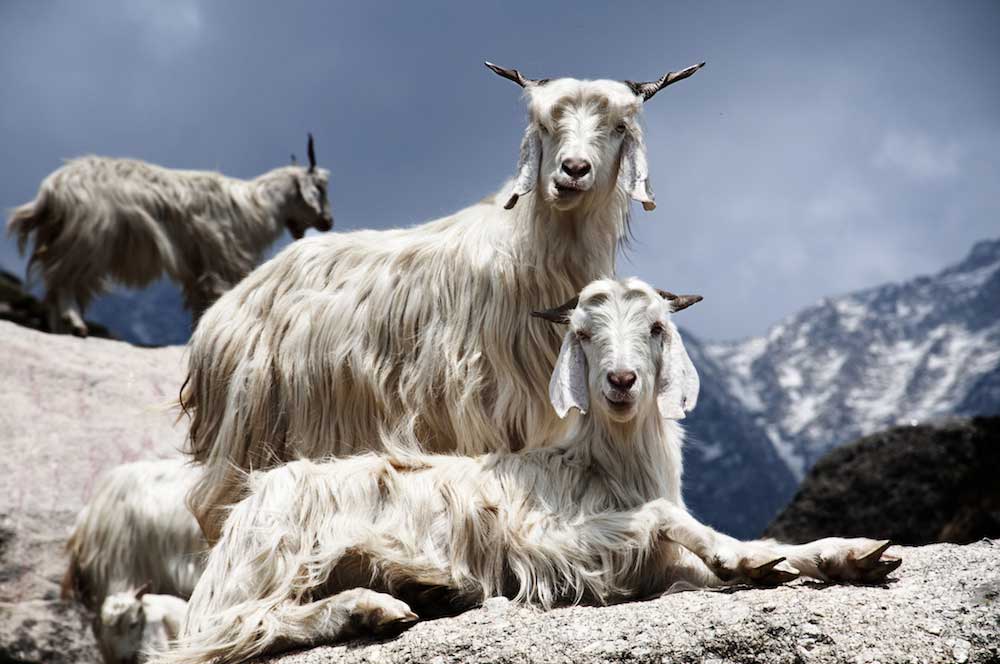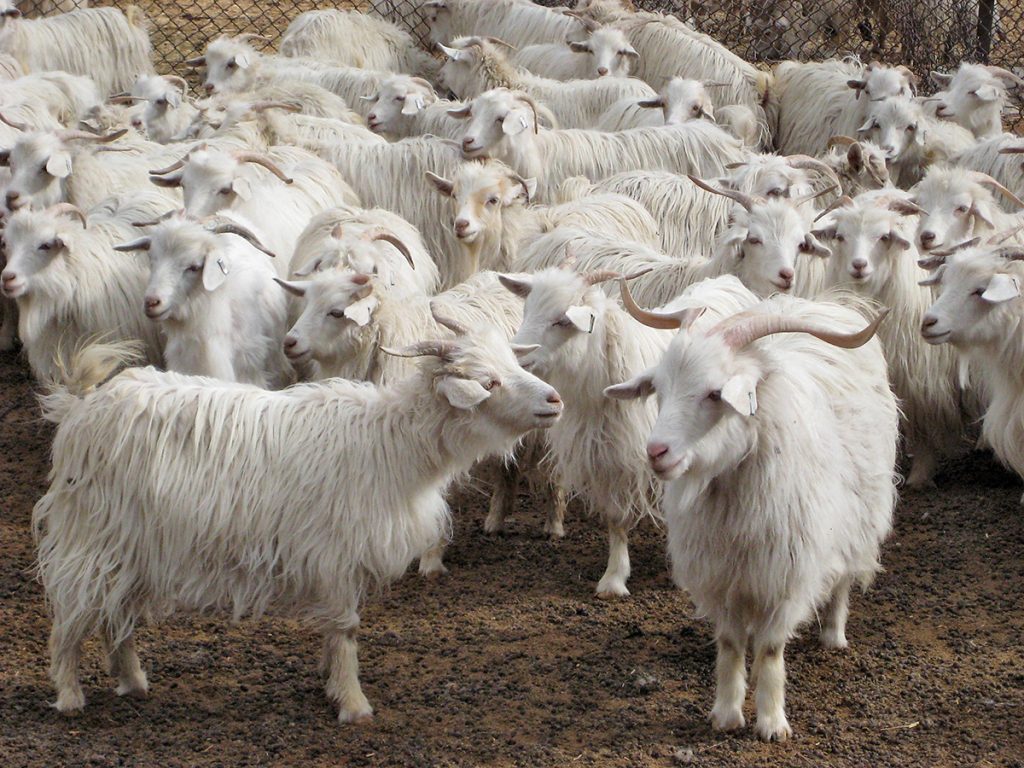
Cashmere is a type of wool; the best-known fine wool. It is known, above all, for being softer than other wools; the most immediate, tangible aspect that attracts consumers. In fact, the characteristic that renders this fibre excellent is its extreme fineness, which means that cashmere fabrics and yarns keep you warm even though they are lightweight. This is its best quality.
Overview
The fineness of wool is measured in microns, starting at around 24 microns. But cashmere, the finest of wools, is generally 14 and 15 microns. Each goat provides between 180 and 400 grams of wool per year. The wool is extracted with a natural combing of the animal, which only takes place in the spring. The most prized part – with the finest and longest wool – is the undercoat that the animal develops in order to maintain a constant body temperature. This most valuable part is called the duvet. The special climatic conditions – the extreme fluctuations in temperature between day and night in the areas where these precious goats live – encourage the development of the duvet. This down has the exceptional feature, which all animal fleeces have (but this more than any other because of the above mentioned characteristics), of protecting the animal’s body from the environment; from both low and high temperatures. The fleece on the top is more bristly and thick and is called the giarre.
Baby cashmere is the duvet of young goats and the finest cashmere available.
Mongolia and Tibet are the largest and best producers of cashmere. Iran and Afghanistan are also producers but the quality is not as high.
Processing and the quality of cashmere
Historically, the best cashmere processors are Scotland and Italy. What does processor mean? It means that once the raw material has been extracted from the goat the bales of cashmere, made up of tops, are formed, just like bales of wool.
Tops are the tufts of wool that form when the goat is combed to extract the cashmere. Each year auctions of this valuable material are held for world supply. The quality of the tops varies due to the very nature of the yarn. Not all goats have the same fleece. Therefore, the fibre varies in fineness, length, and colour.
The most valuable colours are light; white and extra white are the most valuable and expensive. They can be dyed light and extremely bright colours. Dyeing a white base or a grey base blue, results in a very different tone, colour and brightness. The more expensive the raw material the fuller and more vivid the resulting colour of the yarn.
In producing cashmere yarns and fabrics companies have to know how to choose the best or most suitable raw material for the best finished product. If extremely lightweight, warm cashmere fabric in rich or bright or light colours is desired, the best tops should be used and it should be piece dyed. If a cashmere fabric or a yarn does not have to be of an excellent quality, darker, less fine cashmere can be used and then piece or yarn dyed.

The type of material and how it was dyed and processed differentiate one cashmere product from another and account for the different prices on the market, which can vary greatly. Short, dark fibres are used for less expensive products than long, light coloured, fine fibres.
There is nothing to stop a product that was originally white being dyed black. It will produce a full, brilliant black but the customer is not always able to distinguish it from a black dyed on wool that was originally dark.
The processing – how the product is washed – is another discriminating element. A wirier, short fibre will need more processing to make it soft. It may feel extremely soft but after a short time will probably shed hair badly and not wear well. The length and fineness of the fibre as well as the dyeing and weaving are the elements that make the difference. These are the most important factors.
Of course, you can find cashmere that is expensive not because it is an excellent quality but because it is an expensive brand. Equally, you can find excellent quality expensive cashmere that is not made by a well-known brand. Cashmere at low prices is never good cashmere unless it has been discounted for some reason or you find it in a factory outlet. Nobody gives away excellent cashmere.
The difference in price on the market can be as much as ten times for different degrees of fineness, different lengths and colours.
